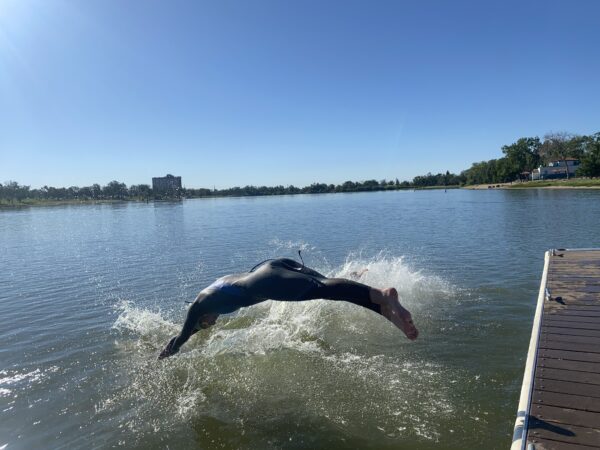As an endurance sport coach, one of the most crucial elements I emphasize for triathletes of all levels is the development of a strong aerobic base. Aerobic metabolism, the process by which the body produces energy through the utilization of oxygen, serves as the foundation for optimal performance in long-distance events. By focusing on aerobic conditioning, triathletes can maximize their potential while minimizing the risk of injury.
The Importance of Long Slow Distance (LSD) Training:
LSD training plays a pivotal role in promoting aerobic adaptations within the body. These low-intensity, high-volume sessions not only improve cardiovascular efficiency but also contribute to the overall health and resilience of bones, ligaments, and muscles. During LSD workouts, the body operates within an aerobic state, minimizing the stress on joints and connective tissues, allowing for safe and sustainable training. Traditionally, we target Zones 1 and 2 based on a 6 or 7 zone training model for aerobic conditioning during the polarized training approach. This typically translates to intensities at or around the first lactate threshold (LT1), approximately 70% of anaerobic threshold (LT2) for age group athletes, potentially as high as 80% for elite performers.

Biomechanics at Slower Speeds:
One of the often-overlooked benefits of LSD training is the opportunity it presents for refining biomechanics. At slower paces, triathletes can focus on developing proper running and swimming form without the added stress of high-intensity efforts. Correcting technique at controlled speeds allows for more effective force application, reduced energy expenditure, and a lower risk of overuse injuries.
Polarized Training: Building the Aerobic Base:
The concept of polarized training is particularly valuable during the early season and off-season phases. This approach emphasizes the combination of high-intensity intervals and low-intensity aerobic conditioning, with minimal time spent in the “grey zone” of moderate intensities. By prioritizing aerobic conditioning during these periods, triathletes can build a robust foundation without compromising their anaerobic capacity. The majority of training volume, often between 70-90%, should be dedicated to low-intensity aerobic efforts, laying the groundwork for future high-intensity work.
Transitioning to a Pyramidal Model:
As the racing season approaches, a transition from a polarized training model to a pyramidal approach can be beneficial. The pyramidal model incorporates a more balanced distribution of training intensities, including a higher proportion of moderate-intensity efforts. For shorter distance triathletes or those with limited training time, the percentage of aerobic work may be lower, potentially as low as 70% aerobic and 30% anaerobic, to maximize training quality within the available time. Conversely, for longer distance athletes or those with more flexible schedules, the percentage of aerobic work could be higher, up to 90% aerobic and 10% anaerobic.

Balancing Aerobic and Anaerobic Demands:
While aerobic conditioning is the foundation, it is essential to acknowledge the anaerobic demands of triathlon events, particularly during the high-intensity efforts required in transitions, rapid changes in pace, surges, and sprint finishes. By maintaining a strong aerobic base, triathletes can more effectively recover from these anaerobic efforts, minimizing the accumulation of fatigue and maximizing their overall performance.
Monitoring and Assessing Aerobic Fitness:
Aerobic fitness should be monitored using a combination of technology and subjective assessments. Smart watches, power meters, and other devices can track key metrics like heart rate, power output, and training load. Recovery metrics, such as resting heart rate and heart rate at various intensities, can also provide valuable insights. Well-designed testing sets, performed regularly throughout the training cycle, will allow for the isolation and tracking of specific adaptations. As these tests are typically sub-maximal in nature, they can be conducted frequently without negatively impacting the overall training structure.

Injury Prevention and Recovery:
Aerobic conditioning not only enhances performance but also plays a crucial role in injury prevention and recovery. The low-impact nature of many aerobic activities, such as cycling and swimming, provides a lower risk of overuse injuries compared to high-impact activities. Additionally, aerobic exercise promotes better circulation, which aids in the delivery of nutrients and the removal of metabolic byproducts, facilitating faster recovery between intense training sessions.
In summary, aerobic metabolism and the development of a strong aerobic base are fundamental to maximizing performance gains while minimizing potential injury risks for triathletes. By prioritizing long slow distance training, implementing polarized and pyramidal training models, and maintaining a focus on aerobic conditioning throughout the training cycle, triathletes can build a solid foundation for sustained success in their sport.

